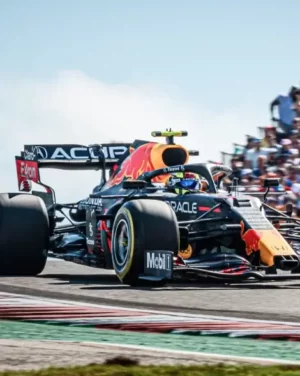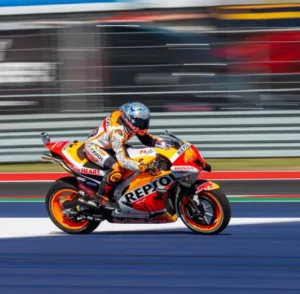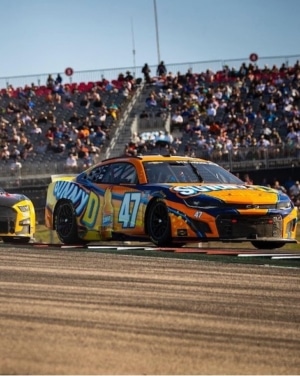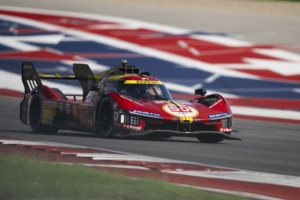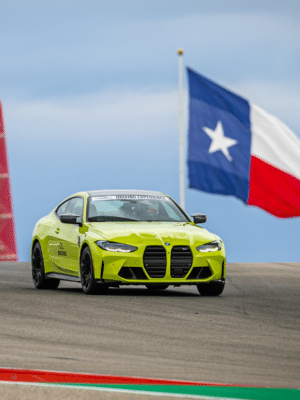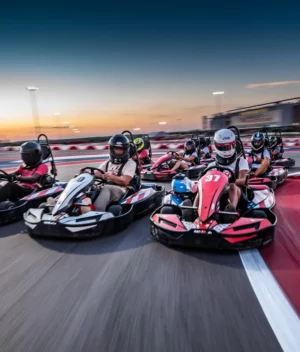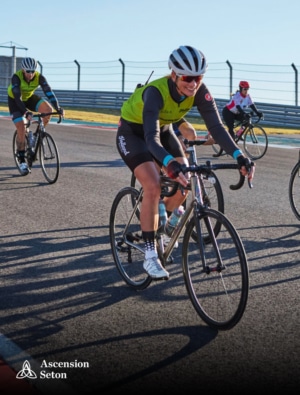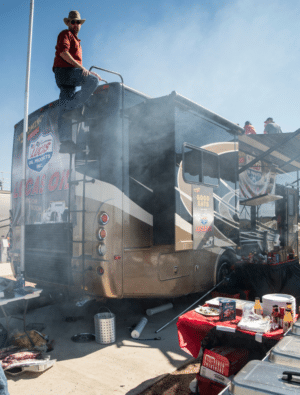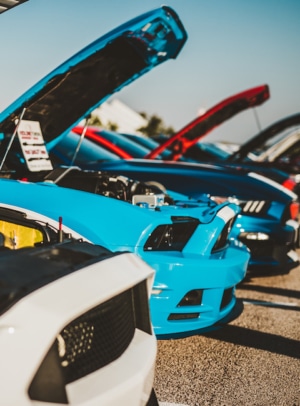American Motogp Rider Nicky Hayden Focused On Getting Healthy, Faster in 2015
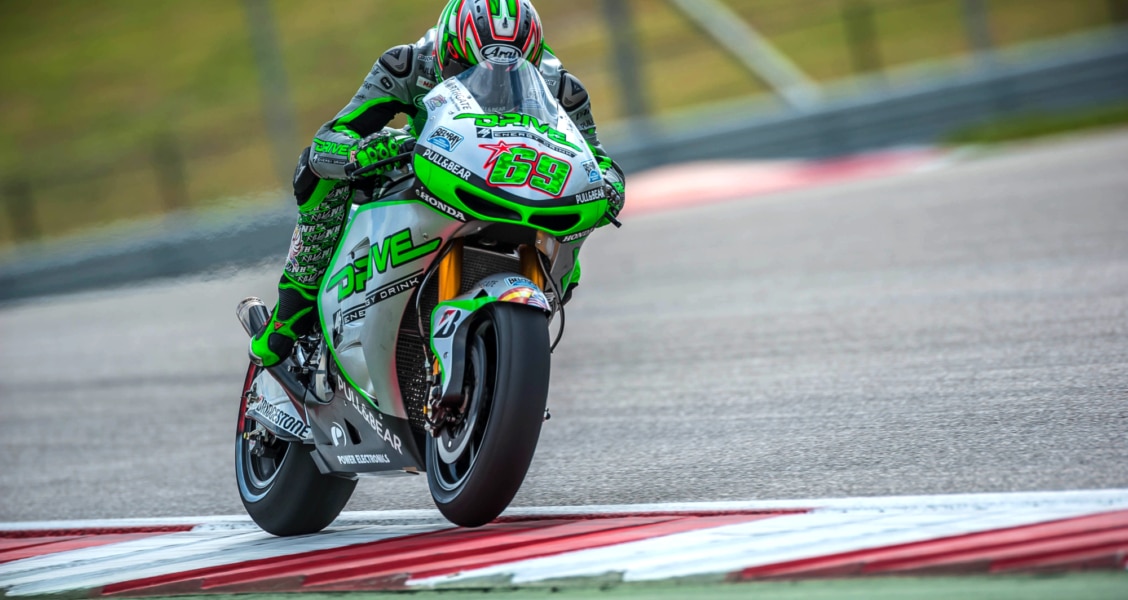

Nicky Hayden has seen a lot of success on two wheels.
The 33-year-old from Owensboro, Ky., is the 2006 MotoGP world champion, the 2002 AMA Superbike champion and has won numerous races on both asphalt and dirt tracks.
Hayden has just wrapped up his 12th season in motorcycle racing’s premier class and his first with the Drive M7 Aspar team. But 2014 was disappointing for the only American left in the sport. He was sidelined for four races because of a recurring wrist injury and finished 16th overall.
Circuit of The Americas this week caught up with the “Kentucky Kid,” who said he’s spending the offseason focused on getting healthier and getting faster.

Hayden said he’s looking forward to returning to Circuit of the Americas for the 2015 MotoGP Red Bull Grand Prix of the Americas. For more information about the race, scheduled for April 10-12, click here.
You’ve got a new bike this year and a full season under your belt with the Drive M7 Aspar team, how are you feeling for 2015?
I feel good with the team and the bike next year. I had an opportunity to ride it a little bit in Valencia (during testing in November). In the end we were 1.1 (seconds) off the top, which isn’t too bad, though the positioning was very bad — we were down in 15th, which is not good. But considering the amount of time we had on the bike and also working with some new guys, there were some positives in there. There really were some positives in there.
What’s the most noticeable difference between this year’s bike and last year’s?
Mainly the power. Last year the chassis – I didn’t really have any problems with the handling of the chassis – it was mainly the acceleration. Not so much the first open of the gas but really when you needed to put the power down, and then the top speed, was our biggest problem, which definitely seems to be better with this new bike. Hopefully we can improve that more. Like I said, we’d like to be closer to the top, but there were some positives in there that we can take away from it and we’ll see what happens from here on out.
How’s your wrist?
You know, it’s doing good. I came back this year and I was able to ride. But I probably wasn’t completely at full strength, which you would understand — you know I went through a really big operation. I had three operations this summer. Being the right wrist was really critical. I went to do a checkup at the end of the season, just last week after Valencia, and everything looks OK more or less. Now I just need to really work on rehab and getting my range of motion back and full strength.
What does it mean to you to be the only American in MotoGP?
Well, you ask me how I feel, I don’t really like it. I really wish we had more Americans over there because I believe we can compete at a high level, especially, you know, against what the Spanish and Italians have done. But on the other hand I realize that’s the situation and I take some pride in it and take some responsibility.
Are there any Americans who you think can rise to MotoGP one day?
I think Americans have the talent. It’s not like Americans aren’t riding anymore. It’s getting the right opportunities, being in the right situation at the right time. Also they need the right foundation to develop those skills, so hopefully the American championship can get back to being more competitive, with more racing and more track time. With these kids, I’d say particularly in Spain, they’re starting them at such a young age at a high level with a real constructive upbringing. Like any sport now, you gotta start young and really go all in and be committed at a young age. We see in GP it’s just getting younger and younger, and these teams want the next young, fast guy. So I look forward to seeing which Americans are out there. I watch the racing here and different things, and I have no doubt that we can still develop kids. I’m looking forward to seeing who can step up and who’s going to come take my spot.
What stands out in your mind about Circuit of The Americas?
I think just the facility and how first class everything is. It’s safe, it’s really state of the art, so it’s great to have that track in our country. To be honest, this year (at Circuit of The Americas) was one of my worst races and even last year I didn’t have a great race there. But that’s nothing against the track. It’s my job to do better because the track is completely safe, completely fast. The event is growing. I know that the paddock and the riders — everybody enjoys their time in Texas, so think it’s only going to get better. I’m looking forward to going there this year and hopefully do a really good race.
Do you ever get a chance to look around Austin?
I have a little. Last year I went there for a bike intro in the spring and did get to do some running downtown on the trail along the river. But really race weekends aren’t a time for much recreation. We’re there on business and have a job to do. It is a great city, I can see that. Just the atmosphere. It’s a very unique place, I gotta say that. I mean Austin is it’s own city, it’s own vibe, it’s own atmosphere, which is cool.
You’ve spent a lot of time on dirt tracks, is there anything you take from riding on dirt onto riding on asphalt?
The big thing, on a MotoGP bike because of the rules and logistically it’s just not possible to take these bikes and go out riding every day. Cycling and gym and all, that’s great, but there’s a certain type of training you get from doing the actual sport. Even though it is different, it’s a lot of the same function as far as muscles, concentration, timing on dirt as GP. Plus the throttle control and the feel, the limit, you know it’s something relatively safe – I mean a motorcycle is always going to have some danger – but you can do it at speeds that are somewhat safe. I think it’s all about finding the limit and pushing yourself.
Put yourself in this situation: It’s one minute from the start of the race, you’re on the grid, what’s going through your mind?
Well, hopefully you don’t have a lot going through your mind. Only thing on your mind should be the race and the start and particularly that first lap. There are so many scenarios you need to somewhat be prepared for. Mainly just thinking about the lights, your start routine, obviously we have the warmup lap, where you want to get as much heat into the tires, the brakes, get a bit of a feel for the track if conditions have changed. Then when you come to the line get your bike into position, and at that point habit takes over, I guess. You’re not really thinking about much you’re just – habit takes over, it’s routine.
Can you put into words what riding at 200-plus mph feels like?
I don’t know what it feels like. (laughs) It feels different for everybody. I don’t feel like I’m going 200 mph, you know. This year at Mugello, one of the fastest tracks on the circuit, I wasn’t able to race because of my injury, and I was out watching there at the end of the first straightaway where there’s a little crest there and speeds really are closer to 220 than they are to 200 and watching it looks faster than it really is. I don’t know. It doesn’t feel so fast for me. I mean, yeah, at times you feel it, but other times you wish you were going faster.
Do you have any prerace rituals, routines, superstitions or songs you listen to?
Most of my superstitions I had to get rid of after this year because it seems like none of them really worked for me too well. Even though I didn’t have that many, certainly not as much as my dad has for the both of us. But of course I have a routine I follow on race day: When I eat, when I get dressed, when I go to the box, that sort of thing. Can’t say there’s anything I really gotta do. If I have a good race one week, I might mark those leathers or mark those gloves or want to wear those same leathers the next race or something silly like that from time to time. But you don’t win races with luck, a lot more goes into it than that.
You’ve had a great career, and we know there’s more to come, but are there any goals or achievements you haven’t reached that you would like to?
I definitely want to achieve some more success in GP, then after that we’ll see how much gas I’ve got in the tank, if I want to try something different. But for the moment I’m focused on GP and trying to have some success there.
What will you be doing during the winter break?
No special plans really. It’s not like I want a new experience, I spend plenty of time in airplanes and hotels. Really it’s a chance to be at home. It’s one of the opportunities where you have a consistent schedule and you can start to train and build up some base for next year because once the season starts it’s pretty much nonstop. So I’ll try to have a rest, try to mentally have a break, but more than anything my plan is to get healthy and get back to full fitness. That’s what my focus is this offseason.
Photos: 2014 Keith Rizzo
